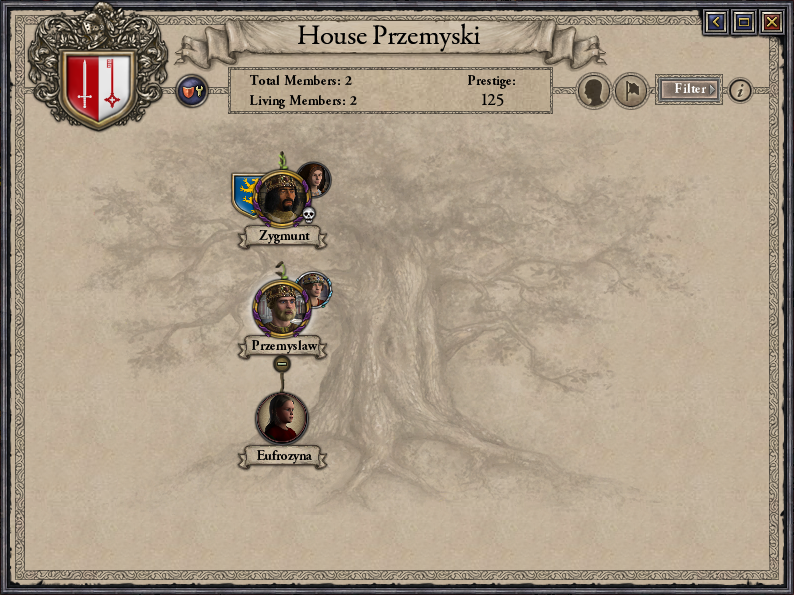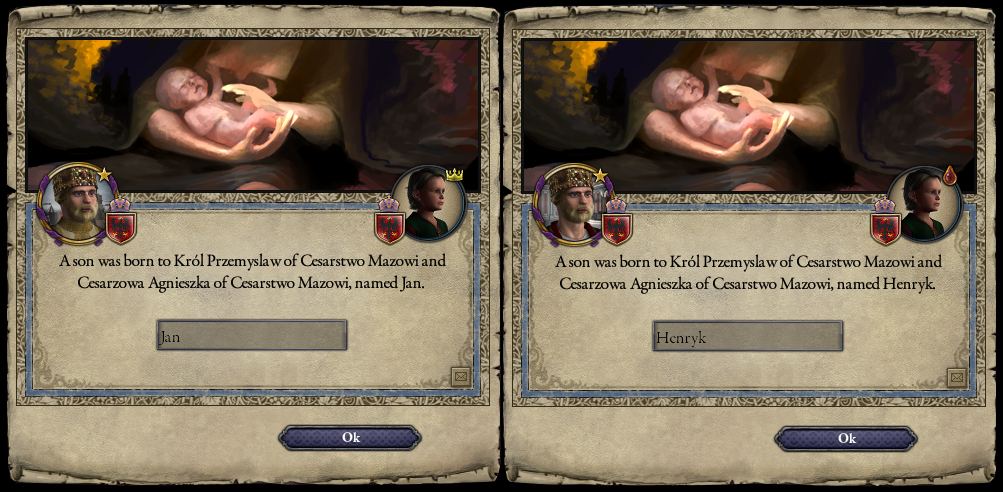Chapter 35 (1190 - 1197)

Chapter 35 (1190 - 1197)

The death of Dytryk during the Danish Crusade initiated claims to the Great Moravian throne, which was currently held by Zygmunt's second son, Konrad. King Arnulf II of Bavaria, who had dynastic ties with the Mojmirids, attacked Konrad to seize the Great Moravian throne from him. With the dynastic interests of the Zygmuntowski family in mind, Zygmunt marched with his army to support his son. However, the war with the Bavarians was not the only problem the Mazovian ruler faced, as Zygmunt’s treacherous son-in-law, Eustace I, the ruler of France, decided to place Konrad's sister, Dobroniega, on the Great Moravian throne.

Zygmunt not only had to fight the Bavarians but also had to face the husband of his eldest daughter in battle. Although painful, this was necessary, as Konrad was his heir, whose rights to Great Moravia should not be questioned. Given this situation, it was essential to defeat the Bavarians before Eustace and his allies could gather their forces.

The town of Vasvár became the site of the battle against the Bavarians. On July 27, 1194, the 17,000-strong army commanded by Emperor Zygmunt IV of Mazovia clashed with the 12,000-strong Bavarian army led by Arnulf II. Thanks to the numerical advantage of the Mazovian forces, they quickly overcame the Bavarians, who were forced to retreat, with the Bavarian forces ultimately completely routed and Arnulf fleeing.

After this victory, Zygmunt marched toward the Bavarian capital, Munich. The Munich castle withstood several attacks but was ultimately captured. A few days later, Arnulf agreed to peace in exchange for renouncing his claims to the Great Moravian throne, recognizing Konrad as the rightful ruler of that realm. The war with the Bavarians lasted barely three years, ending with the signing of a peace treaty on August 16, 1195. During this time, Zygmunt ’s forces also repelled attacks from the French, which had been conducted in more or less coordinated efforts since early 1193.
Eustace had strong allies on his side, supported by Ireland, Aquitaine, and Lombardy. Zygmunt gathered the largest army ever assembled by Mazovian rulers—30,000 soldiers—to repel successive attacks. In April 1195, a battle was fought near Landshut, a Bavarian town.

This battle was somewhat of an anomaly, as it occurred just days after Dobroniega’s death in childbirth, which effectively ended the conflict. However, due to the slow spread of information in those times, the battle still took place. On April 8, 1195, Lombard forces clashed with Mazovian troops in a battle that lasted from early morning until late afternoon, resulting in the rout and decimation of the Lombard knights. A few days later, Sigismund was informed of his daughter’s death. The Mazovian ruler felt mixed emotions at that moment, experiencing both sorrow and a certain satisfaction—sorrow for the loss of his firstborn, but satisfaction because his son and heir remained on the Great Moravian throne.

Of minor importance to Mazovia and Zygmunt was the establishment of a kind of religion in West Africa. Emperor M'Bali of Mali reformed the beliefs of the local tribes, creating a centralized priesthood with the ruler of the Mali Empire as its head. A type of warrior order was also formed, tasked with fighting adherents of other religions. M'Bali’s decision was motivated by the desire to resist the invasions of his Muslim neighbors to the north.

In the Mazovian state, Duke Przemysław of Kamieniec sponsored the founding of the Teutonic Order by donating one of his castles to the newly formed order. On August 11, 1196, the Teutonic Knights officially took possession of the castle from Przemysław, with the mission of defending his lands from pagan Ruthenian raids. This order consisted mostly of knights of German origin, though many Mazovian knights also eagerly joined its ranks.

Zygmunt IV died at the age of 49, and the Mazovian Empire was inherited by his second son, Konrad, who, after Dytryk’s death during the crusade against the pagan Danes, had ascended the Great Moravian throne. Konrad V had not yet reached maturity, being only 15 years old, so until his 16th birthday, his mother Bożysława would govern on his behalf.

Mazovia, 1197.
- 1
- 1
















































